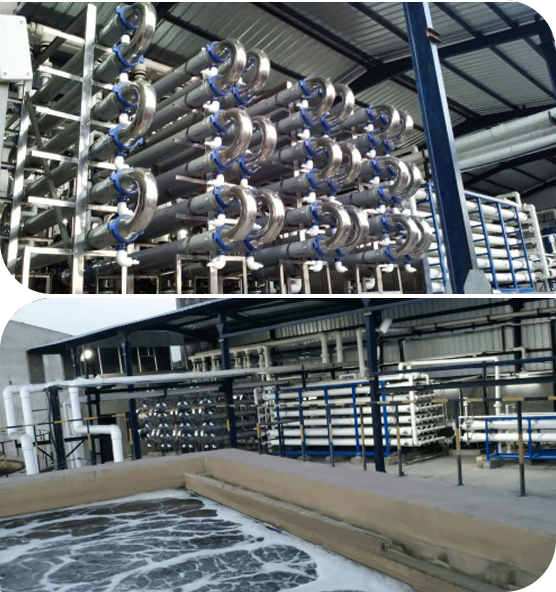
Waterman Engineers Australia has become the leading brands of Zero Liquid Discharge method. A ZLD technique is really a remedy approach and that is used to eliminate all the liquid squander from a program. The aim of ZLD water treatment is to lower wastewater economically and deliver potable drinking water that is certainly suit for regular use. Zero discharge system is a complicated remedy technique that comprises ultrafiltration, reverse osmosis, evaporation and fractional electro deionization. And we've been a very well-identified provider of ZLD programs.
In many Industries, for instance electricity, oil & gas, chemical compounds, mining and Other people, a great deal of wastewater is generated that needs to be managed. Conventionally, this discharge of wastewater is done by means of a plant outfall to some floor water human body like an evaporation pond, or in some cases deep properly injected. These practices cause many environmental worries by the general public in many areas of the whole world, as water can be a scarce resource and its administration needs to be monitored. These problems have resulted within the establishment of ZLD processes by quite a few industries to reduce their environmental footprint and improve sustainability. And, Waterman Engineers Australia are ideal ZLD suppliers you can find for this system.
Homes OF ZERO LIQUID DISCHARGE Process
The Attributes of the Zero Liquid Discharge method may vary depending upon the specific style and technological innovation utilised. On the other hand, some popular Attributes of ZLD units include:
H2o Conservation: Amongst the first targets of ZLD devices should be to preserve water by minimizing the discharge of liquid squander in the setting.
Substantial Water Purity: ZLD systems are meant to develop significant-good quality water that is no cost from impurities and contaminants, which makes them ideal for use in several industrial processes.
Flexibility: ZLD programs are frequently designed to support a wide choice of input liquid streams, that makes them versatile and well suited for use in numerous industries.
Advanced Wastewater Cure: Zero liquid discharge techniques use Highly developed wastewater treatment method methods to take away impurities and contaminants from the effluent, making high-good quality h2o.
Waste Reduction: ZLD units aid lower squander by lowering the amount of liquid squander that should be disposed of and by creating a concentrated, reliable squander product that may be safely and securely disposed of.
Electrical power Efficiency: ZLD techniques might be Electrical power-intense because of the substantial Electricity requirements of evaporation as well as other wastewater remedy processes. Even so, advancements in technological know-how are making Zero liquid Zld System Manufacturer Zero Liquid Discharge System discharge systems much more Power-effective and cost-effective.
Waterman Engineers Australia manufactures Zero Liquid Discharge (ZLD) systems designed to remove all liquid squander, aiming to make potable drinking water and decrease environmental effect. Their ZLD methods typically include ultrafiltration, reverse osmosis, evaporation, and fractional electro deionization. Vital systems employed are Falling Movie Brine Concentrators, Forced Circulation Crystallizer, and others, which has a two-action technique of pre-focus and evaporation/crystallization to Get well and reuse water. These devices are adaptable to diverse industries, emphasizing water conservation, significant water purity, squander reduction, and Vitality performance. Specialized specifications are diversified and customizable, thinking about factors like drinking water resource, circulation rate, and feed drinking water quality.
The need for Zero Liquid Discharge (ZLD) units arises with the requirement to address environmental problems associated with drinking water scarcity and air pollution. In industries like energy, oil & gasoline, and mining, broad amounts of wastewater are produced. Customarily, this wastewater is discharged into bodies of water, triggering air pollution and depleting clean up water assets. ZLD devices purpose to minimize these impacts by treating and recycling wastewater in the economic system, thereby conserving water, lowering waste, and selling sustainability.
When thinking about the technological specifications of the Zero Liquid Discharge (ZLD) system, essential facets to target include things like the h2o supply it can take care of, the procedure's move level, the standard of feed drinking water, the phases of remedy concerned, the recovery rate of h2o, procedures for focus disposal, resources of building, operating conditions, and system automation and Command. These things ensure the method's effectiveness, longevity, and effectiveness in treating and recycling industrial wastewater.
Zero Liquid Discharge (ZLD) crops offer you Rewards such as h2o conservation, waste reduction, and air pollution prevention, contributing to environmental sustainability. They are applicable in industries like energy technology, oil and gas, substances, and mining, the place they help in taking care of industrial wastewater successfully, reducing the ecological footprint, and complying with rigorous environmental regulations. These devices are vital in spots going through h2o scarcity and for industries aiming to enhance their sustainability and operational effectiveness.
FAQs to get a Zero Liquid Discharge (ZLD) technique frequently tackle its operational concepts, Price-performance, maintenance demands, environmental effects, applicability across a variety of industries, and regulatory compliance. These thoughts assist end users understand the method's Positive aspects, technological demands, and suitability for their certain wastewater management demands.
one. Zero Liquid Discharge (ZLD) is usually a wastewater treatment method intended to do away with all liquid squander.
two. The process's factors are affected by the precise industrial course of action, wastewater composition, and regulatory requirements.
three. Effluent procedure crops take out pollutants from textile effluents to circumvent environmental contamination.
four. Pros involve h2o conservation, air pollution reduction, and regulatory compliance.
5. The objective is to minimize environmental impact by recycling h2o and cutting down waste.
6-nine. Effluent cure vegetation are stages in wastewater treatment: Most important (Bodily separation), secondary (biological treatment), and tertiary (advanced procedure).
10. Unit functions contain filtration, sedimentation, biological procedure, and disinfection.
11. Restricting parameters are components that influence the therapy's performance, like pH and contaminant concentration.
twelve. Layout concerns include stream charge, effluent composition, and desired excellent of handled h2o.